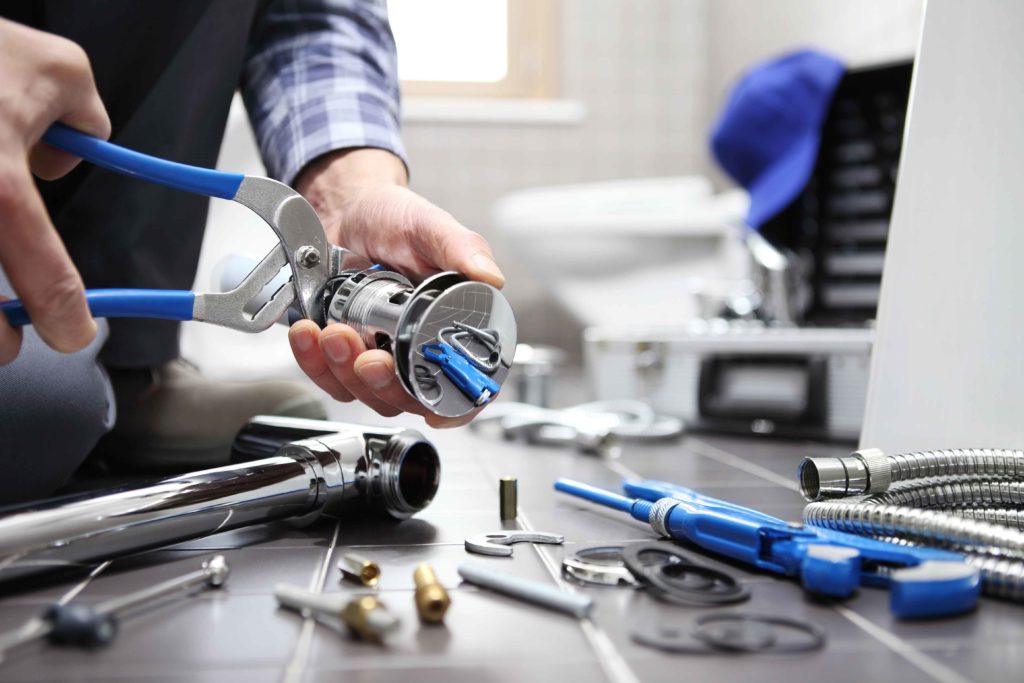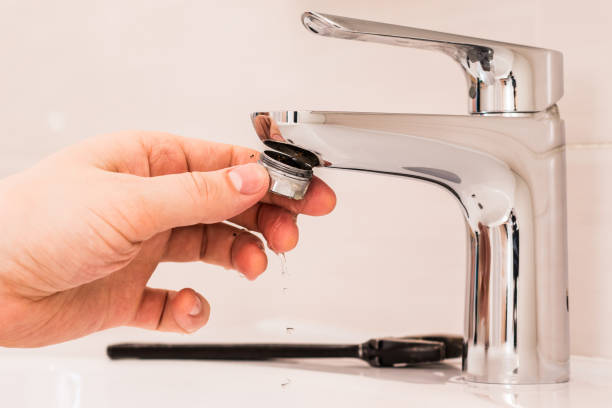Learning the Importance of Resolving a Malfunctioning Faucet
Learning the Importance of Resolving a Malfunctioning Faucet
Blog Article
They are making a few good points about Why It's Important to Fix Leaky Faucets in general in this article further down.

Leaking faucets might appear like a small aggravation, yet their effect surpasses simply the aggravation of the noise. From drainage to incurring unnecessary economic prices and health dangers, ignoring a leaking faucet can cause various repercussions. In this article, we'll explore why it's critical to resolve this typical household concern quickly and effectively.
Wastefulness of Water
Environmental Effect
Dripping faucets add substantially to water wastage. According to the Environmental Protection Agency (EPA), a solitary tap dripping at one drip per secondly can throw away more than 3,000 gallons of water annually. This not just pressures water resources but additionally affects environments and wild animals depending on them.
Financial Prices
Increased Water Bills
Beyond the environmental effect, leaking faucets can pump up water expenses significantly. The gathered wastefulness gradually equates into higher utility expenditures, which can have been stayed clear of with prompt repair work.
Possible Home Damage
In addition, long term leaking can lead to damage to components and surface areas surrounding the faucet. Water buildup can trigger staining, rust, and even architectural concerns if left ignored, resulting in added repair service costs.
Wellness Worries
Mold and Mold Growth
The consistent existence of dampness from a dripping tap creates an ideal atmosphere for mold and mildew development. These fungi not only compromise indoor air top quality yet also pose wellness threats, specifically for individuals with respiratory problems or allergic reactions.
Waterborne Illness
Stagnant water in trickling faucets can come to be a breeding place for bacteria and various other virus, boosting the risk of waterborne conditions. Contaminants such as Legionella microorganisms flourish in stationary water, potentially bring about major ailments when ingested or breathed in.
Do it yourself vs. Expert Fixing
Benefits and drawbacks of DIY Repair Work
While some might try to repair a leaking tap themselves, do it yourself repair work include their very own collection of challenges. Without proper understanding and devices, DIY attempts can intensify the problem or cause insufficient repair services, lengthening the trouble.
Advantages of Working With a Specialist Plumber
Working with a specialist plumber makes certain that the underlying source of the trickling tap is resolved properly. Plumbing professionals have the experience and tools to identify and repair tap problems successfully, conserving time and lessening the threat of further damage.
Step-by-Step Overview to Dealing With a Dripping Faucet
Tools Required
Prior to trying to fix a trickling faucet, collect the necessary tools, consisting of an adjustable wrench, screwdrivers, replacement components (such as washing machines or cartridges), and plumber's tape.
Common Faucet Issues and Their Solutions
Recognize the type of faucet and the certain issue creating the drip. Usual issues consist of worn-out washing machines, corroded shutoff seats, or defective O-rings. Describe maker directions or on the internet tutorials for step-by-step guidance on repair work.
Preventive Measures
Regular Maintenance Tips
To stop trickling taps, do routine upkeep such as cleaning up aerators, inspecting for leaks, and replacing damaged components promptly. In addition, think about mounting water-saving tools or upgrading to extra efficient components.
Value of Prompt Repairs
Addressing leaking faucets as quickly as they're discovered protects against further water waste and possible damage, ultimately saving both water and money over time.
Effect On Residential Or Commercial Property Value
Understanding of Well-Maintained Home
Preserving a property in good condition, consisting of addressing upkeep problems like dripping taps, improves its perceived worth and desirability among potential customers or lessees.
Impact on Resale Worth
Features with properly maintained plumbing components, including faucets, command greater resale values in the real estate market. Resolving trickling taps can contribute to a positive impact throughout property evaluations and negotiations.
Ecological Duty
Private Contribution to Conservation
Taking duty for taking care of trickling taps straightens with wider efforts toward water conservation and environmental sustainability. Every individual's activities collectively make a substantial impact on protecting valuable sources.
Lasting Living Practices
By focusing on punctual repair services and adopting water-saving practices, individuals contribute to sustainable living practices that profit both present and future generations.
Final thought
Addressing a leaking tap surpasses simple benefit; it's a necessary action towards preserving water, lowering economic expenses, and protecting health and residential property. Whether through do it yourself repair work or specialist aid, acting to take care of leaking taps is a little yet impactful way to advertise liable stewardship of resources and add to a much healthier, much more lasting future.
How to Fix a Leaky Faucet: Step-by-Step Repair Guide
A leaky faucet may seem like a simple annoyance, but if it's not fixed promptly, that leak could cost hundreds to potentially thousands. From water damage to mold, mildew, and high water bills, even a tiny leak can be catastrophic if left unattended. Damage like this can even affect the overall value of your home, so it's important to take the right approach for leaky faucet repair. You may need the help of a plumber in some cases, but we've got a few tips you can try on how to fix a leaky faucet before calling the pros.
Four Faucet Types
When you're learning how to fix a leaky faucet, the first step is knowing what kind of faucet you're working with! There are four common types.
Cartridge Faucets
Cartridge faucets come in one- or two-handled varieties. In one-handled cartridge faucets, hot and cold water combines in a single cartridge. In the two-handled versions, hot and cold water are controlled separately and mixed in the faucet.
Ball Faucets
Ball faucets have a single lever you push up and down to adjust the pressure and rotate to change the temperature. A slotted metal ball controls the amount of water allowed into the spout.
Compression Washer Faucets
They're the oldest type of faucet, but they're still used in many homes — especially older ones. Compression faucets have two separate handles that, when turned, raise or lower the washer that seals a water valve. This valve stops water from flowing through the faucet when it is turned off.
Disc Faucets
Disc faucets rarely need to be repaired due to their maintenance-free design. The water flow is controlled by two discs — the upper one raises and lowers against a fixed lower disc, creating a watertight seal. If your disc faucet starts leaking, you may need to replace the seals or clean residue buildup from the inlets.
Fixing a Leaky Faucet
Step 1: Turn Off the Water
Whether you're learning how to fix a leaky bathtub faucet or how to fix a leaky kitchen faucet, always turn off the water supply to your working area when you're fixing a leak. The last thing you want is a flood added to your list of things to fix.
Look for the shutoff valves below your sink or around the tub and turn them clockwise to stop the water flow. If your faucet doesn't have shutoff valves, you may need to turn off the water for the whole house. Check to make sure it's off by turning the faucet on. If nothing comes out, you're ready to start the repair.
Step 2: Take Apart the Faucet
How you disassemble your faucet depends on the type of fixture you have. You can use a flathead screwdriver to remove the caps on top of the handle or handles for cartridge and compression faucets. Inside, you should see handle screws. Unscrew these with a screwdriver to remove the handle.
Disc- and ball-style faucets will typically have an inlet screw near the handle, and removing that will reveal the interior of the faucet.
Detach the Valve Stem
For cartridge- and compression-style faucets, you'll see the inner valve stem or cartridge once you remove the faucet handles. If you have a compression faucet, unscrew the brass valve stem. If you have a cartridge faucet, pull out the cartridge. If your cartridge has been in place for a while, it may require some tools or extra force to remove it due to mineral deposits.
Examine and Replace Parts
Once you've removed the parts, check them out to confirm what needs to be replaced. You may see corroded rubber washers, O-rings, stems, or cartridges. On a ball-style faucet, check the seats and springs for damage.
If you need to repair a leaky disc faucet, check the inlet and seals on the lower disc.
Once you determine what parts must be replaced, visit your local hardware store. Bring the damaged parts with you to ensure you can purchase the correct components to replace them.
Clean Valves and Faucet Cavity
If you've removed a stem or cartridge, you may notice mineral buildup in the faucet's threads. Use white vinegar to clean the valve seat by soaking it for a few minutes, then scrub it away with a soft toothbrush and rinse with warm water. You can also clean the interior of the faucet in the same way.
Reassemble the Faucet
Once your faucet is cleaned and the required parts have been replaced, it's time to reassemble it. Put the pieces back together and slowly turn the water supply back on. Doing this slowly is crucial because too much initial water pressure can damage the new hardware you've just installed.
https://homewarranty.firstam.com/blog/how-to-fix-leaky-faucet

I ran across that article about Why Are My Faucets Dripping (And Can I Fix It Myself)? while doing a lookup on the internet. Feel free to take the time to promote this blog if you enjoyed reading it. Many thanks for going through it.
Report this page